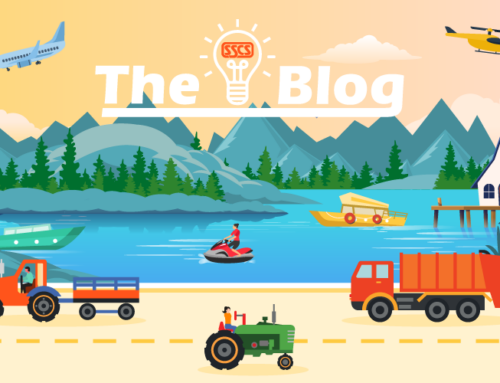The SSCS Interview: Dr. Chris Gray of Saatchi & Saatchi X
Influencing Shopper Perspective
 Followers of SSCS on social media may remember the link we posted in early January to an article entitled, “Six Things to Know about Male C-Store Shoppers.”
Followers of SSCS on social media may remember the link we posted in early January to an article entitled, “Six Things to Know about Male C-Store Shoppers.”
This informative, extremely readable piece pares down the psychological profile of the male C-store shopper into easily digested bits, making it easy for C-store operators and their partners, such as food and beverage suppliers, to understand how to appeal to this considerable segment of the market.
We suggest you read the article in question before the following interview, because our subject, Dr. Chris Gray, is the author. He’s vice president of shopper psychology for Saatchi & Saatchi X—a global leader in shopper marketing—and there’s no better way to understand the nature of his work than to actually see it in print. In the following conversation Dr. Gray has some interesting things to say about the psychological approach to shopper marketing and the C-store channel, in particular. Think of this interview as a complement to “Six Things to Know.”
SSCS: Tell us a little bit about your work at Saatchi & Saatchi X.
Chris Gray: I have a Psy.D. in clinical psychology and have been with Saatchi & Saatchi X for almost 13 years. I went into practice first, but it wasn’t long until I moved into the marketing space. I like to joke that I participated in my first focus group in 1996 and immediately fell in love.
Being in this position makes total sense to me, because shopper marketing is a behavioral science. It goes deeper than the approach one usually associates with traditional television and print advertising, which is designed to influence shopper perception. Behavioral science-based marketing, in contrast, seeks to influence shopper behavior. We identify specific customer profiles and determine their motivations, which is integral to influencing brand affinity, awareness, and perception.
Traditional advertising can succeed in getting customers to respond, “What a nice brand!” but that response doesn’t necessarily stop those customers from picking up a competitor’s product. I work with our shopper insights team, strategy team, and creative team to make sure we fully understand our shopper so we can create communications and experiences that are relevant and useful to them.
SSCS: Talk a little bit about your work with the C-store channel.
CG: We’ve worked in the C-store channel for approximately a decade. Initially our exposure came through the companies that provide the snacks and beverages available in C-stores. When you work with those types of clients you are inevitably going to get involved in the C-store channel because it’s such an incredibly important outlet for their brands and products. The C-store customer is unique with characteristics that have to be kept in mind as we develop programs meant to appeal to them.
What has to be remembered may seem obvious: they are in search of convenience, a state of mind that is as good as absolute. When they come to a C-store they are not stocking up. They won’t be browsing. These are task-driven trips and the C-store customer is looking for a solution which is going to incorporate convenience in some way. If you are going to connect with that C-store shopper and influence their behavior, you have to connect with this mindset.
SSCS: So how do you influence the behavior of someone with such a pre-determined mindset?
CG: You need to be strategic in your approach. Retailers often make the mistake of thinking they don’t have to be strategic with task-focused customers. They feel they can put something loud and colorful in the way of a shopper and he or she will grab it on impulse. But the opposite is actually true. The less time we have to communicate, the more strategic we need to be because we don’t have a second to waste once that customer walks through the door. We have to break through the clutter—remember there are many other products vying to be noticed—by presenting part of an experience that is relevant to that shopper’s own. If we don’t do it successfully, we’ll likely not get a second chance.
Many marketers choose to disrupt the customer in an effort to make an impression on them, but a task-driven shopper is not interested in being disrupted and may get frustrated when it happens. The preferred, more powerful way to get attention is to make sure your communication or visual connects with the shopper and ties into the relevance of their trip without slowing them down. That’s where, from a C-store’s perspective, we can really make a difference.
SSCS: How have you seen the C-store market changing?
CG: A blending or merging of channels is having a tremendous impact on how C-stores do business. C-stores are offering more sophisticated offerings like fresh food and pre-packaged, healthy meals, drug stores are offering produce, traditional grocers are exploring quick serve options. The concept of convenience is broadening as a result, and this, in turn, broadens consumer expectations. This means as an operator I not only have to meet the needs of a hungry guy that wants to have a hot dog from the roller grill; I also have to be ready to provide a solution for that individual’s wife, who may want a freshly made salad. If I don’t address both those needs, I may lose a customer who will find what they want somewhere else.
The expansion into other categories spells an expansion of opportunities for the C-store operator, but it obviously spells challenges for them, too. They have to find a balance between convenience and quality. The consumer used to be very lenient regarding C-stores. They simply did not have a high expectation in their regard. But in this day and age, the C-store must bear the weight of heightened consumer expectations. The bar has been raised for everyone.
SSCS: What factors have driven this blending of channels?
CG: Everyone’s life continues to speed up, so consumers are always looking for ways to best spend their time. C-stores are identified with convenience, and from the shopper’s perspective, it’s not that unreasonable to expect them to deliver that convenience in tandem with more upscale products and services, now that the consumer is being increasingly exposed and conditioned to blended channels. Shoppers are less and less inclined to make concessions regarding quality of product, quality of service, and reasonableness of price. They want to know how a C-store can help them get the most out of their lives. C-stores that elevate and evolve their strategies to provide a satisfying answer to this question will be most likely to succeed.






Leave A Comment